Gray‑and‑white cats look like they wandered through an old‑time movie set and brushed against a paint tray on the way out. Their “tuxedo,” harlequin, or bi‑color coats draw the eye, but it’s their stories Viking shipmates, Victorian lap‑warmers, farm mousers that keep us hooked. Below you’ll find 15 breeds that frequently appear in silver and snow, complete with temperament notes, grooming how‑tos, and adoption insights so you can choose a feline friend that truly fits your lifestyle.
At a glance:
• Longest coat: Persian
• Largest body: Maine Coon
• Quietest voice: British Shorthair
• Hypoallergenic potential: Siberian
• Water‑lover: Turkish Van
1. British Shorthair
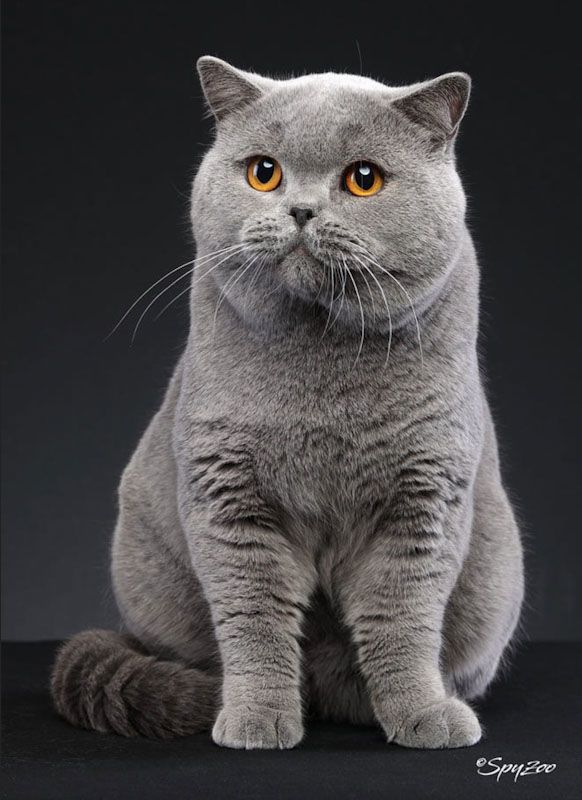
Snapshot
- Size: 12-17 lb
- Energy: Low to moderate
- Life span: 12-20 years
- Good with kids? Yes, in calm homes
The British Shorthair’s dense “teddy‑bear” coat once protected barn cats from chilly English winters. That plush fur comes in many shades, but the blue‑gray and white combo is a fan favorite. Their round copper eyes and Cheshire‑cat smile inspired Lewis Carroll’s classic illustration.
Grooming & Care
Weekly brushing prevents shedding explosions on your sofa. Because they gain weight easily, swap free‑feeding for puzzle feeders that turn meals into mental workouts.
Why adopt?
Their laid‑back nature makes them perfect apartment buddies, but don’t mistake calm for boring-they’ll happily chase a feather wand when invited.
2. Scottish Fold
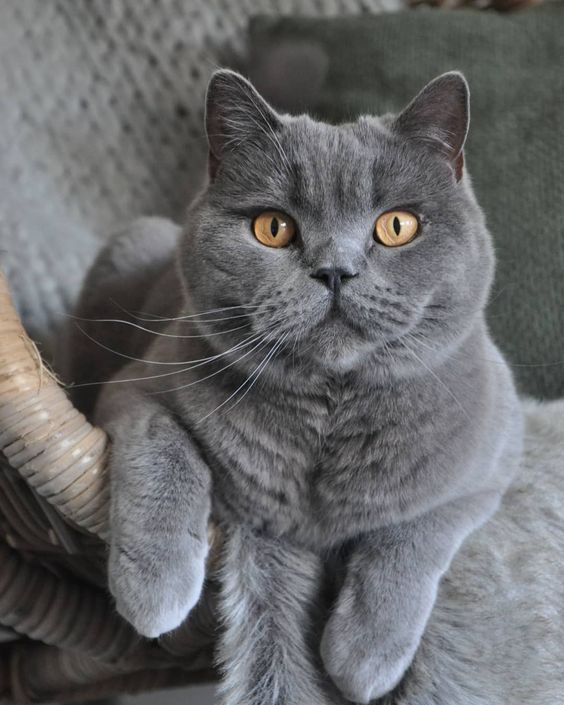
Snapshot
- Size: 8-12 lb
- Energy: Moderate
- Life span: 11-15 years
- Good with kids? Yes, supervised
Those owl‑like folded ears result from a natural cartilage mutation. Sadly, homozygous folds can develop painful joint issues. Choose breeders who pair one folded parent with one straight‑eared mate and provide X‑ray health records.
Grooming & Care
Their plush coat-short or long-needs twice‑weekly brushing. Clean ears gently; the fold can trap debris.
Personality
Think “Velcro cat.” They’ll perch on your laptop as you type, purring like a soft engine.
3. American Shorthair
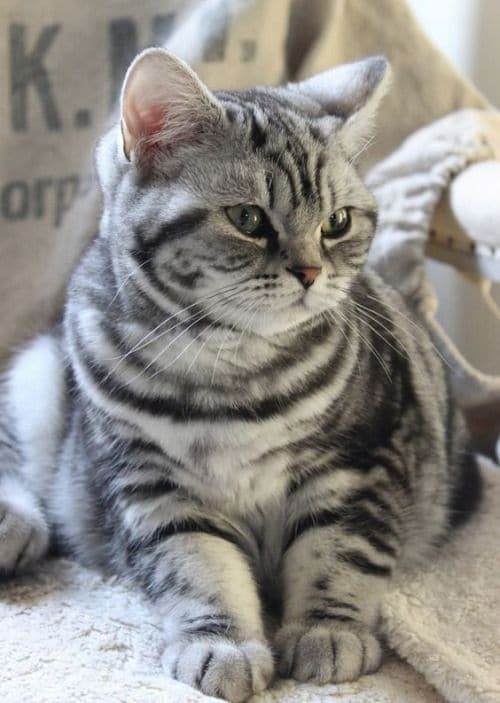
Descended from mousers on European ships, the American Shorthair is the all‑American success story. Silver‑tabby‑and‑white is the signature pattern, but many wear a classic gray saddle over snowy undersides.
Exercise tip: Scatter kibble “Easter‑egg” style around the house to mimic hunting and curb boredom.
4. Maine Coon
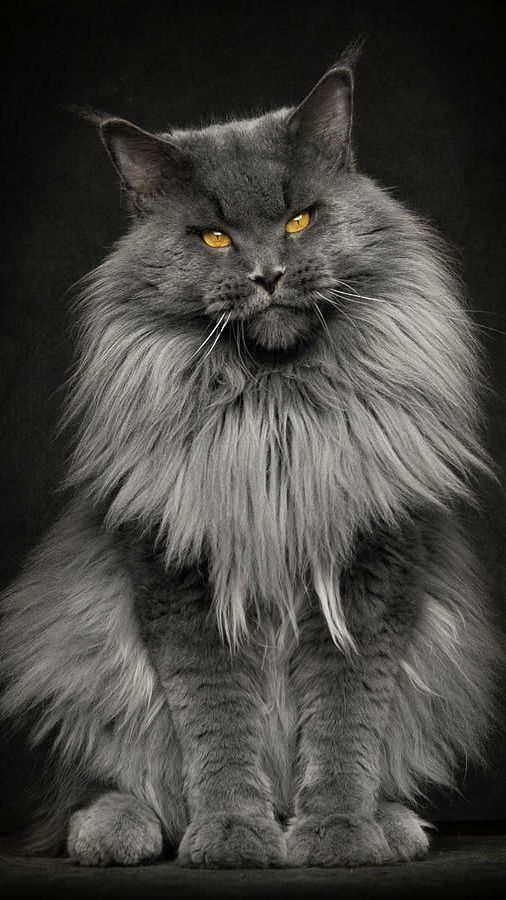
At up to 18 pounds, the Maine Coon is the gentle giant of U.S. felines. Their flowing ruff, tufted ears, and bushy tail evolved to battle New England winters.
Grooming routine
Daily combing (wide‑tooth, then slicker brush) plus a monthly bath keeps mats at bay. Train kittens to enjoy water early.
Fun fact
Maine Coons chirp rather than meow, a sound that fans describe as “trills of joy.”
5. Norwegian Forest Cat
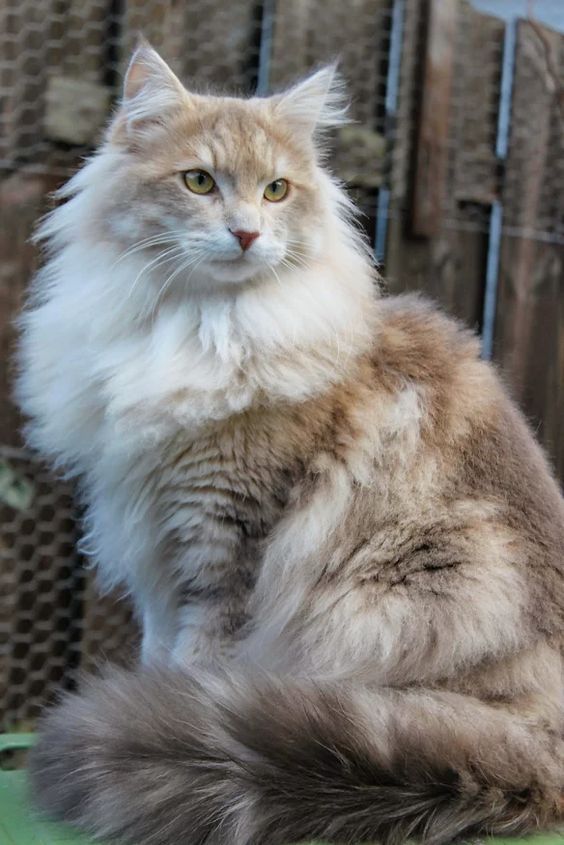
Nicknamed “skogkatt” by Vikings, the Norwegian Forest Cat sailed longboats as pest control. Modern “Wegies” still love high places offer ceiling‑height cat trees or sturdy wall shelves.
Seasonal shed alert
Expect a spring coat dump worthy of a snowstorm. A metal rake comb is your best ally.
6. Siberian
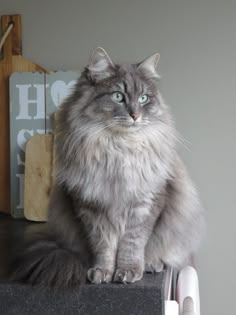
Many allergy sufferers report fewer symptoms with Siberians because they tend to produce less Fel d 1 protein. Though not guaranteed hypoallergenic, diligent grooming and air purifiers help.
Play style
Highly athletic jumpers, they turn door tops into balance beams. Secure breakables!
7. Ragdoll
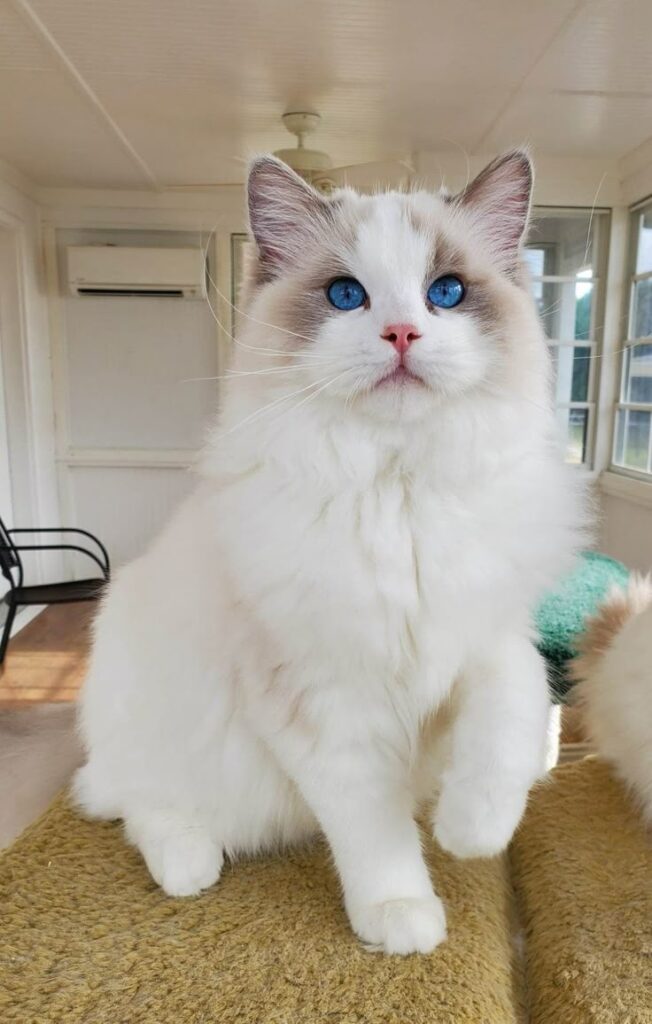
Ragdolls go limp when cradled, a trait created by breeder Ann Baker in the 1960s. Their blue eyes and semi‑long gray‑and‑white coats make them Instagram stars.
Care must‑knows
They crave company leave interactive treat dispensers when you’re out, or adopt a feline friend for companionship.
8. Turkish Van
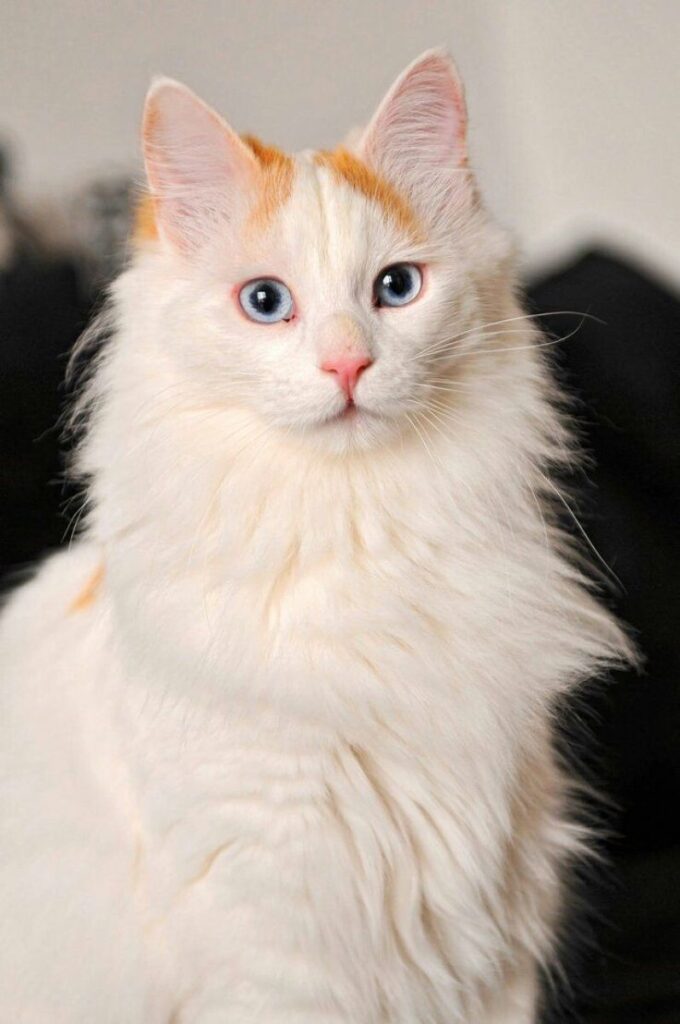
Dubbed the “swimming cat,” Turkish Vans sport color mainly on head and tail (“Van” pattern). Their water‑resistant coat dries quickly, explaining their bathtub antics.
Health note
Pure white Vans sometimes carry the W gene linked to deafness. Gray‑and‑white patterns lower the risk, but ask for BAER hearing test results.
9. Persian
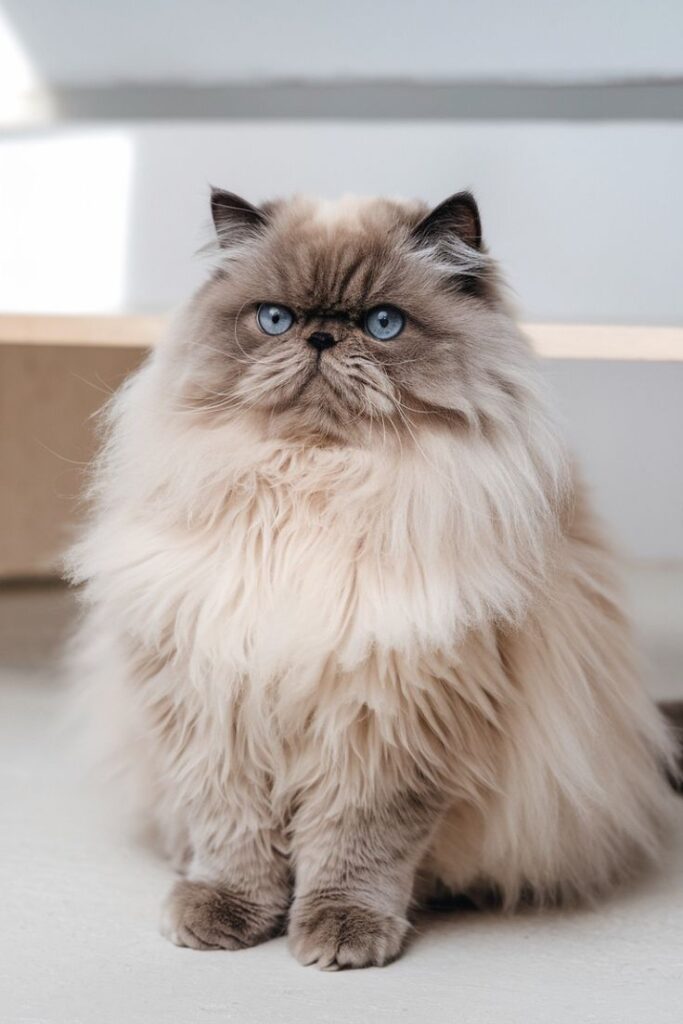
With a history tracing to 17th‑century Persia, Persians epitomize luxury. The gray‑and‑white variant, called “blue‑and‑white bicolor,” showcases their sweeping coat.
High‑maintenance meter: 10/10
- Daily eye‑wiping combats tear staining.
- Comb every day (yes, every) to avoid painful mats.
- Schedule professional grooming every 6-8 weeks.
10. Exotic Shorthair
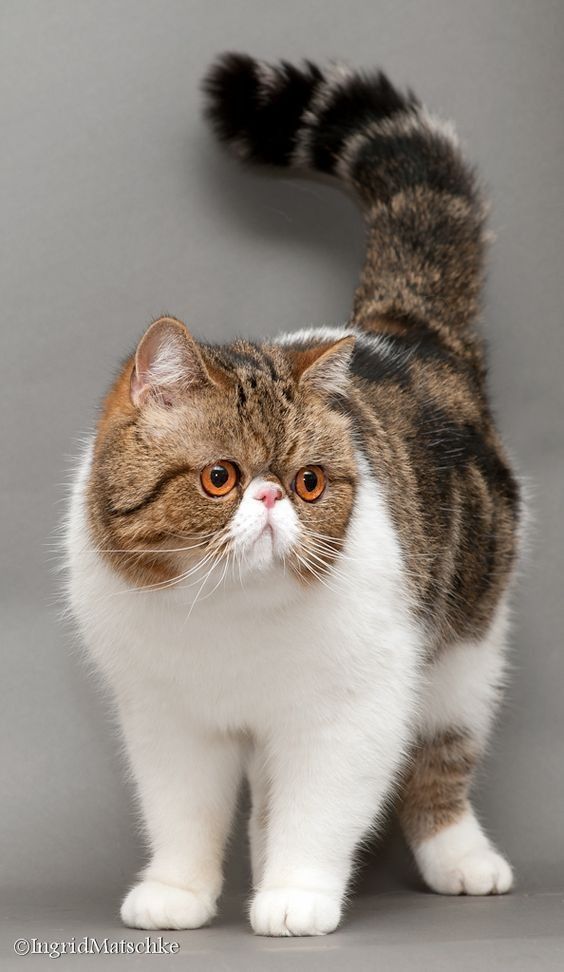
Imagine a Persian after a stylish pixie haircut. Exotics share the same sweet face but with a dense, plush short coat that sheds less.
Why people love them
They deliver Persian cuddles minus the marathon grooming sessions. Expect moderate play bursts followed by epic naps.
11. Devon Rex
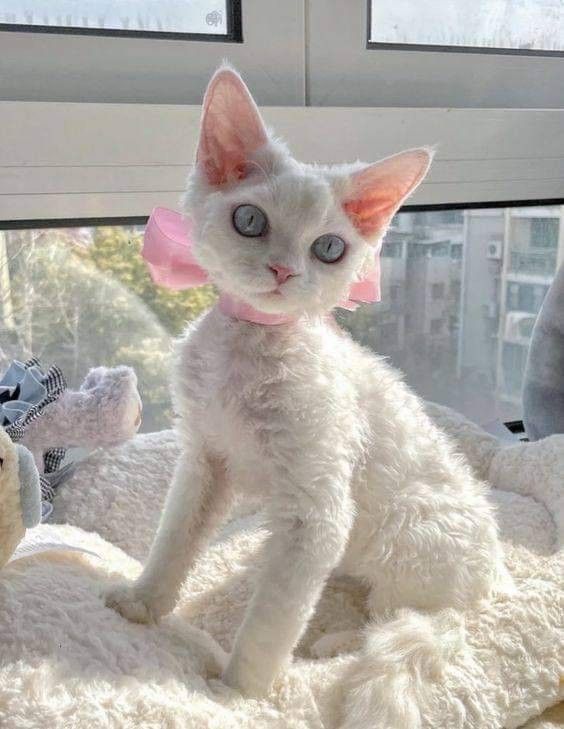
The Devon’s wavy coat feels like crushed velvet. Large ears, elfin cheekbones, and mischievous green eyes give them a fairy‑tale look.
Care tip
Their thin fur offers little insulation; invest in cat sweaters or heated beds when temps drop.
12. Cornish Rex
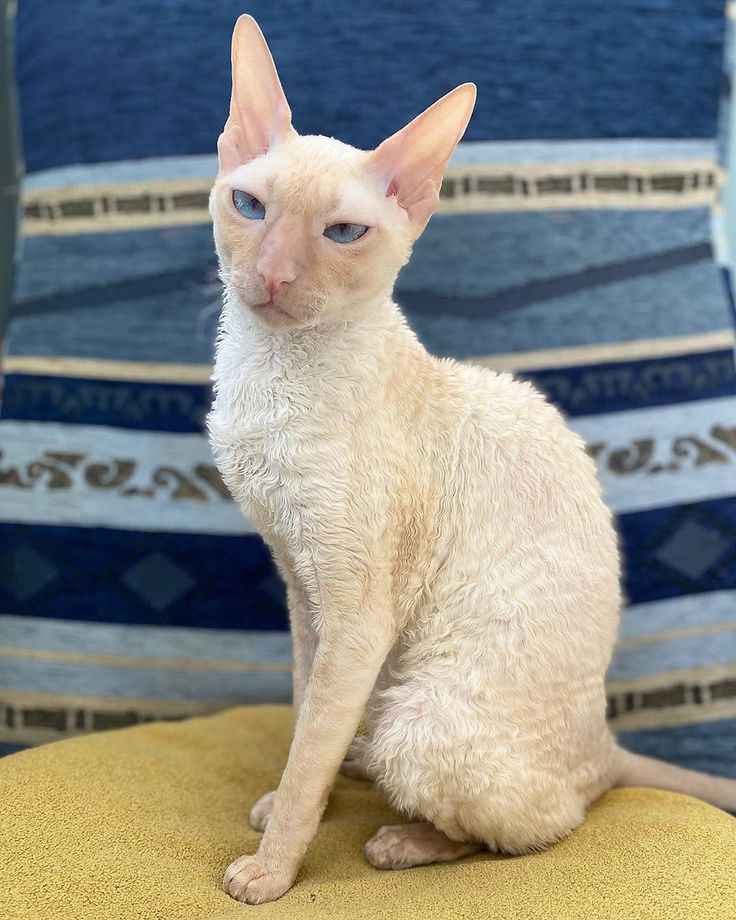
Unlike the Devon, the Cornish Rex has only the soft down layer-no guard hairs. That makes them puppy‑like in energy and totally devoted to their humans.
Skin health
Because natural oils aren’t wicked away by guard hairs, a gentle monthly bath prevents greasiness.
13. Oriental Shorthair
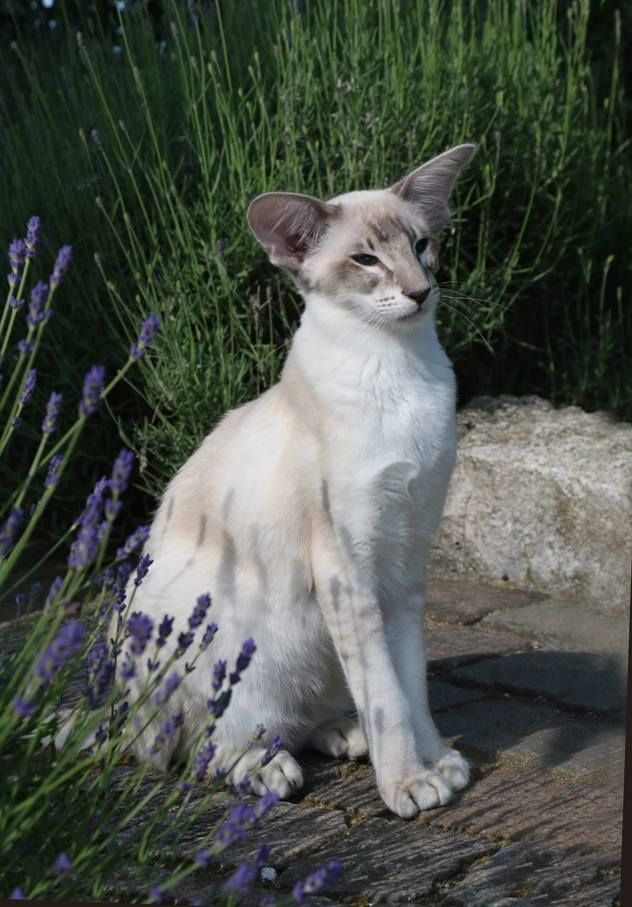
A Siamese cousin, the Oriental comes in over 300 color combos. Gray‑and‑white (officially “blue‑and‑white bicolor”) pairs a sleek body with emerald eyes.
Personality
Think “extrovert on espresso.” They vocalize opinions on everything from breakfast to TV shows, so be ready for conversation.
14. Munchkin

Short legs, full heart. Munchkins zoom around like furry hockey pucks, proving stature isn’t destiny.
Ethical consideration
While many live healthy lives, look for breeders who screen for lordosis and pectus excavatum-spinal and chest issues linked to the dwarfism gene.
15. Domestic Longhair & Shorthair
Not a single breed but a beautiful mosaic of mixed‑breed house cats. Shelters worldwide feature gray‑and‑white kittens waiting for homes.
Adoption advantage
You’ll save a life, spend less on adoption fees than breeder prices, and still gain a stunning bi‑color companion.
Choosing the Right Gray and White Cat for You
- Energy level – A laid‑back British Shorthair suits quiet homes, while an Oriental needs active engagement.
- Grooming commitment -Can you handle a Persian’s daily routine, or would an Exotic be easier?
- Space considerations – Maine Coons and Norwegian Forest Cats relish vertical territory.
- Health budget – Factor in breed‑specific testing (e.g., HCM scans for Ragdolls).
Grooming Toolkit Checklist
| Tool | Purpose | Frequency |
|---|---|---|
| Slicker brush | Lift loose undercoat | 2-3× week |
| Stainless steel comb | Detangle mats | As needed |
| Dematting rake | Heavy seasonal shed | Spring & fall |
| Nail clippers | Prevent snagging | Every 2 weeks |
| Pet‑safe wipes | Eye & ear cleaning | Weekly |
Pro tip: Introduce tools during play sessions. Rub the brush with catnip to build positive associations.
Health & Nutrition Notes
- Protein first. Choose foods with meat as the top ingredient; gray coats stay shinier with omega‑3‑rich diets.
- Weight watch. Indoor cats need measured meals and 15 minutes of play twice daily.
- Routine vet care. Annual dental cleanings prevent periodontal disease, which can dull coat color and reduce lifespan.
Frequently Asked Questions
Are gray‑and‑white cats rare?
No. The color is common across multiple breeds and mixed‑breeds, though patterns like true “Van” markings are less frequent.
Do gray‑and‑white cats have unique personalities?
Coat color alone doesn’t dictate behavior, but certain breeds known for the pattern do share traits (e.g., social Ragdolls).
Can a shelter predict adult coat length?
Look at ear and paw fluff on kittens; longer tufts often signal a longhaired adult.
Final Thoughts
Gray‑and‑white cat breeds combine timeless elegance with vibrant personalities-whether it’s a placid British Shorthair warming your lap or a Turkish Van splashing in the sink. By researching health, grooming, and activity needs up front, you’ll forge a lasting bond with a feline friend who fits seamlessly into your life.
Ready to meet your match? Visit reputable breeders for pedigree pets or, better yet, stop by your local rescue where many dapper gray‑and‑white cats are waiting for a forever home.

2 thoughts on “15 Beautiful Gray and White Cat Breeds You’ll Love”